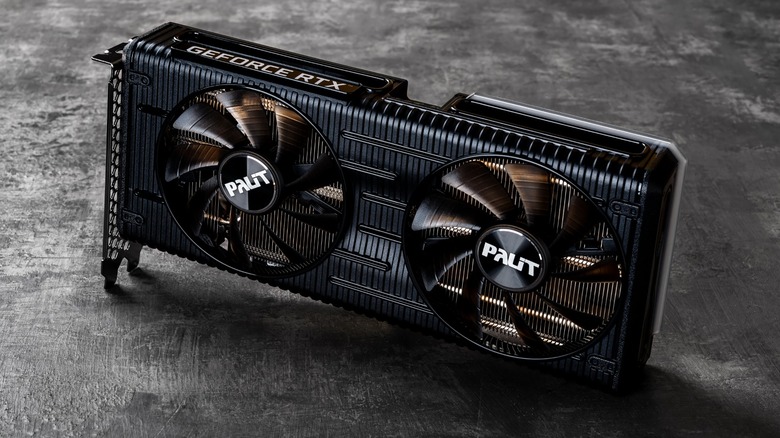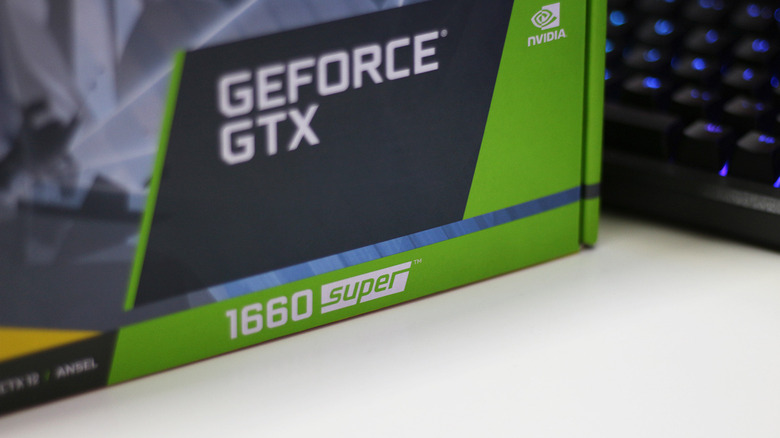Nvidia RTX Vs. GTX GPUs: What's The Difference?
Building a gaming PC can be as daunting of a task as it is exciting — setting a budget, picking the right parts, and ensuring compatibility across components can get overwhelming given the pool of options at your disposal. The graphics card, or the GPU, is perhaps the most important piece when building a gaming PC. A powerful GPU will deliver a high-quality gaming experience with ample frames.
With excellent launches like the Radeon RX 9070 XT, the discussion surrounding AMD vs. Nvidia GPUs is no longer as clear-cut as it used to be. Nvidia has crafted a name for itself in the gaming community, and despite the comparatively higher price points for its GPUs, they sell like hot cakes.
There is an Nvidia graphics card for every budget, but you might have seen listings alternate between the "RTX" and "GTX" product names. These are simply the marketing terms that Nvidia uses to brand its consumer-oriented graphics cards, specifically in the gaming industry. GTX stands for "Giga Texel Shader eXtreme" and while there is no official documentation stating what RTX stands for, most unofficial sources have settled for the "Ray Tracing Texel eXtreme" full form.
Simply put, the RTX series of graphics cards are a successor to the GTX range. If you're buying an Nvidia GPU in 2025, know that any GTX cards you see on third-party new or used marketplaces are several years old at best — with the GTX 16-series being finally discontinued in 2024.
RTX is newer and faster
Nvidia unveiled the RTX 20-series of graphics cards in 2018 with the RTX 2070, 2080, and 2080 Ti GPUs. The big distinction between these and the previous generation GTX cards was their ability to handle real-time ray tracing. This feature, which has now become the new buzzword in gaming, simulates how light, shadows, and reflections interact with surfaces and objects more realistically. This is made possible thanks to the dedicated RT Cores found in RTX GPUs, something that the GTX cards lacked.
Games like "Control" and "Cyberpunk 2077" are great examples of titles that look considerably better with ray tracing turned on. However, you would need a decently powerful GPU to handle this at enjoyable frame rates — something that even lower-tiered RTX cards might still struggle with. Though you might see a dip in performance with ray tracing enabled, this is where the next big feature of RTX GPUs comes in — Deep Learning Super Sampling.
Nvidia DLSS is an AI-powered upscaling technology that drastically improves a game's frame rate by rendering it at a lower resolution. DLSS utilizes Tensor Cores to accomplish this. Newer RTX GPUs even bring frame generation techniques that can be paired with DLSS to deliver higher frame rates in supported games.
Compare that with the GTX GPUs that lack both the RT and Tensor Cores, and you not only miss out on ray tracing, but also don't get the performance benefits that come with DLSS and Multi Frame Generation.
Should you still buy a GTX GPU in 2025?
Although the GTX 1630 is the most recent GTX-branded GPU that launched in 2022, it was aimed at entry-level machines and was heavily criticized for its terrible value proposition. In reality, it was in 2019 that the GTX 1660 Super last offered moderately high performance. Nvidia's entire lineup now consists of ray tracing enabled cards, with the RTX 50-series of GPUs being the latest ones. Competition from AMD has also caught up, offering now-staple features like ray tracing, AI upscaling, and frame generation.
Really, the only reason someone might want to pick up a GTX graphics card is for their value in the used marketplace. Apart from being comparatively cheaper, GTX cards lack most of the features that modern games play better with. The GTX 1080 Ti was the best graphics card in the GTX lineup, but an RTX 3060 Ti offers better performance with the added benefits of DLSS and ray tracing. In such a case, unless you're picking up a GTX GPU for dirt cheap, it's worth looking at current-gen options that are better fit to accommodate newer titles.


